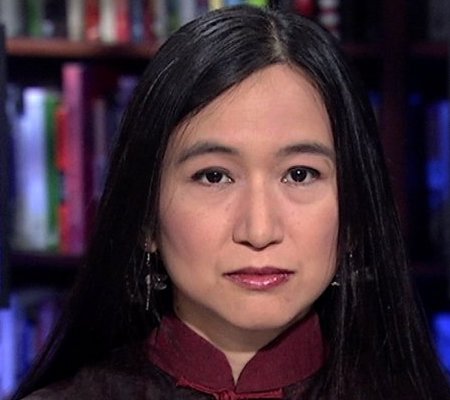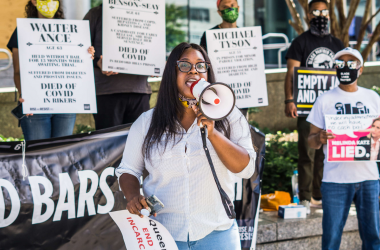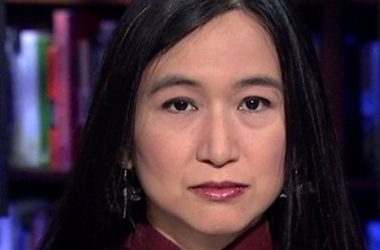By Victoria Law
The Nation
July 10th, 2013
On Monday, July 8, prisoners at the Security Housing Unit (SHU) in California’s Pelican Bay State Prison began a mass hunger strike to protest long-term solitary confinement. It is not the first time such an action has taken place. In 2011, prisoners staged two separate hunger strikes to protest their continued placement in long-term solitary confinement.
Hunger strikers issued five core demands:
1. Eliminate group punishments for individual rules violations.
2. Abolish the debriefing policy and modify active/inactive gang status criteria.
3.
Comply with the recommendations of the US Commission on Safety and
Abuse in Prisons (2006) regarding an end to long-term solitary
confinement.
4. Provide adequate food.
5. Expand and provide constructive programs and privileges for indefinite SHU inmates.
During the first hunger strike, in July 2011, at least 1,035 of the SHU’s 1,111 inmates refused food. The strike spread to thirteen other state prisons and involved at least 6,600 people incarcerated throughout California. The second strike, in September 2011, spread to twelve prisons within California as well as to prisons in Arizona, Mississippi and Oklahoma that housed California prisoners. By the third day, nearly 12,000 people were participating. The strike ended after the California Department of Corrections and Rehabilitation (CDCR) promised a comprehensive review of all SHU prisoners validated as gang members or associates.
Now prisoners are striking again. They charge that in the intervening two years the CDCR has not addressed any of these demands, and they have called for a mass hunger strike combined with a nonviolent work stoppage. “Once initiated, this protest will continue indefinitely—until all Five (5) Core Demands are fully met,” they declared. By the second day of the strike, almost 30,000 California prisoners were taking part.
The 2011 hunger strikes mobilized family members as well. For many, this is their first foray into political organizing, even though their loved ones have spent years locked in windowless cells nearly twenty-four hours a day.
Dolores Canales’s son Johnny has spent thirteen years in the SHU. Canales herself has had firsthand experience with solitary confinement. During her own imprisonment, she spent nine months in the Administrative Segregation Unit (ASU) at the California Institute for Women, where she was confined to her cell twenty-two hours a day. “There, I had a window. The guards would take me out to the yard everyday. I’d get to go out to the yard with other people,” she recalled. But being in solitary confinement still took its toll: “There’s an anxiety that overcomes you in the middle of the night because you’re so locked in,” she described. Even after being moved from segregation, Canales was unable to shake that anxiety. She broke into a sweat and panicked each time she saw a group of officers even though she had broken no rules. “I just can’t forget.”
In contrast to his mother’s experience, Johnny spends nearly twenty-four hours a day in a windowless cell. Food is delivered twice a day through a slot in the cell door. The “yard” he is taken to for solitary exercise consists of a cement yard the length of three cells with a roof only partially open to the sky. Johnny never sees the sun.
Over 1,000 people are held in the SHU, and more than half have spent over a decade there. Prison administrators place people in the SHU either for a fixed term for violating a prison rule or for an indeterminate term because they have been accused of membership in a prison gang.
Accusations often rely on confidential informants and circumstantial evidence, such as tattoos or possessing certain books. Prison administrators also place prisoners in the SHU on accusations of gang association, again relying on circumstantial evidence such as being seen speaking with an alleged gang member on the housing unit, associating with prisoners of similar background or racial group or possessing literatures associated with political ideologies (such as the Black Panther Party).
Until recently, alleged gang members are released from the SHU only if they “debrief” or provide information incriminating other prisoners. Debriefing can be dangerous to both the prisoner who debriefs and his family on the outside. In addition, prisoners can be falsely identified as gang members by others who debrief in order to escape the SHU. One does not necessarily need to be a gang member or associate to be sent to the SHU: jailhouse lawyers and others who challenge inhumane prison conditions are disproportionately sent to the SHU. Johnny was one of those jailhouse lawyers. “He’s assisted with legal work for alleged associates charged with being in gangs,” his mother stated.
Read more: Tens of Thousands of California Prisoners Launch Mass Hunger Strike | The Nation http://www.thenation.com/article/175195/tens-thousands-california-prisoners-launch-mass-hunger-strike#ixzz2YlPzY7vd
Buy Resistance Behind Bars:
Buy Don’t Leave Your Friends Behind:




